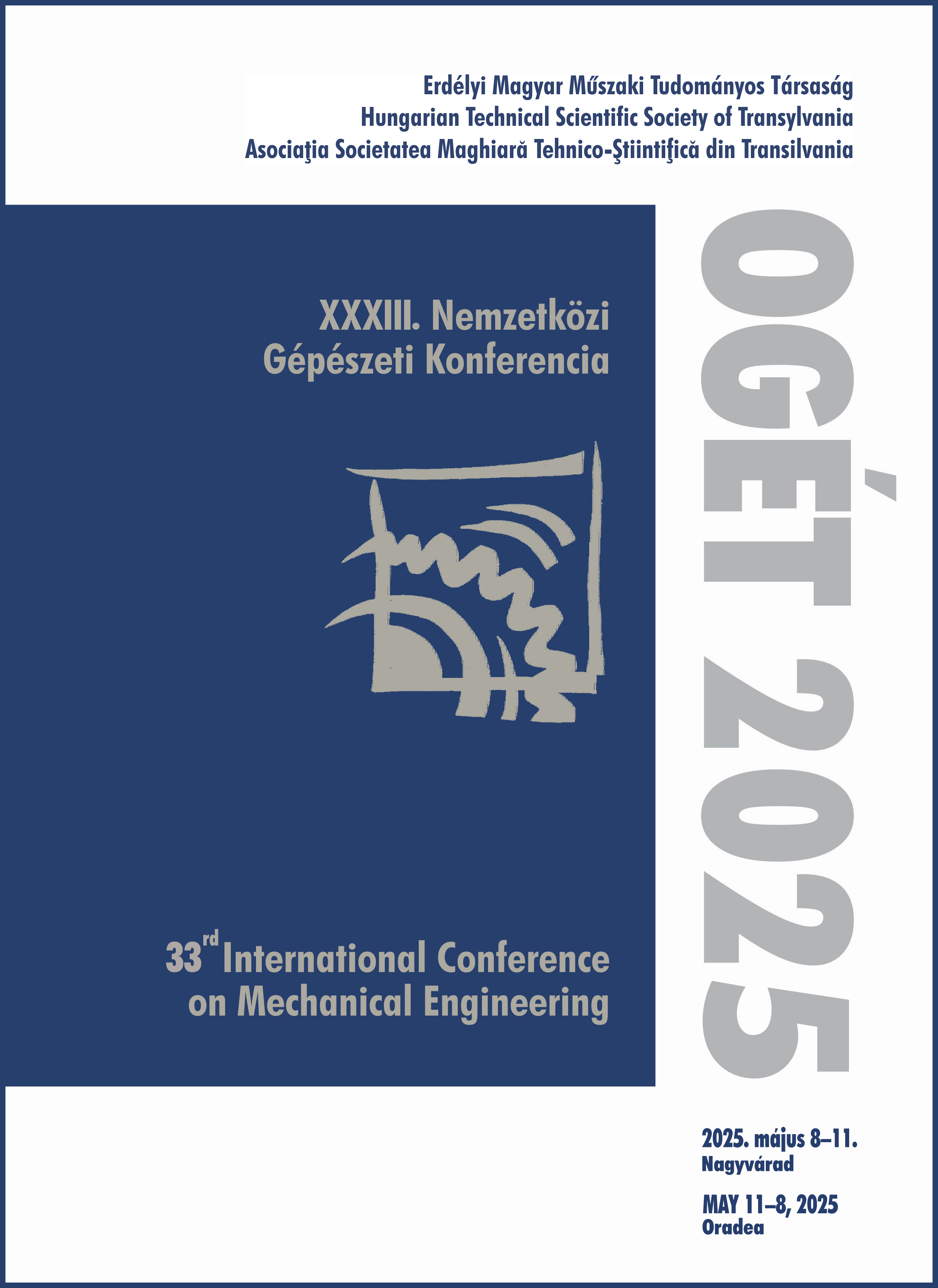Additív gyártás felhasználása zománcozott berendezések javítási technológiájának fejlesztéséhez
Improving the repair technology for enamelled equipment using additive manufacturing
Keywords:
tantalum patch, additive manufacturing, 3D printing, glass enamel reactor repair, /, tantálfolt, additív gyártás, 3D nyomtatás, zománcozott reaktor javításAbstract
Enamelled equipment is extensively utilised within chemical and pharmaceutical environments. However, the presence of enamel defects invariably restricts available repair options and poses a heightened risk of further damage. The solution to this predicament lies in the creation of a 3D-printed tantalum patch which can be non-destructively attached to the enamel surface. Glass enamel coated devices are utilised extensively in the chemical industry and in the active pharmaceutical ingredient manufacturing technologies. The primary function of the glass enamel coating is to protect against corrosion and to ensure that the manufactured product is in contact with a specifically passive surface during the manufacturing process. Glass enamel coatings find application in a wide range of industrial settings, including mixing reactors, distillation columns, and tanks, along with a variety of piping sizes, isolation fittings, filters, and associated accessories. In the present study, hydrodynamic, hydrostatic and penetration tests were conducted on a test reactor, with the resultant samples being monitored under real conditions and the findings and experiences being documented. The measurements were carried out under controlled reactor pressure and temperature, and under conditions that ensured adequate turbulence. Adequate sealing is a critical aspect in the application of the tantalum patch, as leakage will lead to device failure. The solution in the research topic is innovative, because not only in Hungary, but also among users worldwide, any necessary repairs to glass enamelled devices have been carried out by experts in the field using almost identical methods over the past 40 years. However, it should be noted that these repair methods have their limitations.
Kivonat
Zománcozott készülékeket széleskörben alkalmaznak vegyi-, és gyógyszeripari környezetben, azonban a zománchibák megjelenésekor a javítási lehetőségek korlátozottak, további károsodás veszélyeit hordozzák magukban. Erre megoldást kínál az az eljárás, amikor célzottan a hibahelyre készül egy 3D nyomtatott tantálfolt, ami roncsolásmentesen rögzíthető a zománc felületére. A vegyiparban és a gyógyszeripari hatóanyaggyártó technológiákban nagy arányban használatosak üvegzománc bevonatos eszközök, készülékek. Az üvegzománc bevonat elsődleges célja a korrózió elleni védelem, illetve, hogy a gyártott termék egy kifejezetten passzív felülettel érintkezzen a termék gyártásakor. Üvegzománc bevonattal készülnek keverős reaktorok, kolonnák, tartályok, széles mérettartományú csővezetékek, elzáró szerelvények, szűrők és kiegészítő eszközök. Kutatásunk során hidrodinamikai, hidrosztatikai és penetrációs vizsgálatokat végeztünk tesztreaktorban, amely során valós körülmények között monitoroztuk a létrehozott mintát, és dokumentáltuk az eredményeket és a tapasztalatokat. Szabályozott reaktortéri nyomás és hőmérséklet mellett, megfelelően turbulens körülmények között történtek a mérések. A megfelelő tömítettség kritikus szempont a tantálfolt alkalmazása során, hiszen a szivárgás a készülék tönkremeneteléhez vezet. A kutatási téma ötletét adó megoldás azért is aktuális, mert nemcsak a hazai, de a világ felhasználói körében az üvegzománcozott eszközök esetlegesen szükséges javításait az elmúlt 40 évben közel azonos módszerekkel végezték a szakma hozzáértői. Ezeknek a javítási módszereknek pedig megvannak a korlátai.
References
De Dietrich, GLASS-LINED REACTOR, GLASS REACTOR, MONOBLOC AGITATORS, 2025.
Elérés: 2025. március 7. [Online].
Elérhető: https://www.expo21xx.com/process_industry/19714_st3_distiller_chemical/default.htm
De Dietrich, Products Portfolio - Glass-lined Technology & other materials, 2025 [Online].
Elérhető: https://www.dedietrich.com/en/products-and-solutions
G. Schäfer, 3.27 - Degradation of Glass Linings and Coatings, in Shreir’s Corrosion, B. Cottis, M. Graham, R. Lindsay, S. Lyon, T. Richardson, D. Scantlebury, és H. Stott, Szerk., Oxford: Elsevier, 2010, o. 2319–2329.
doi: 10.1016/B978-044452787-5.00178-5.


